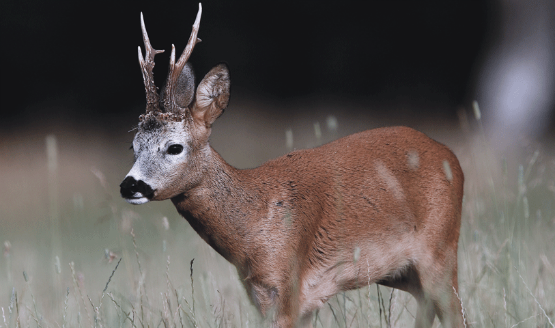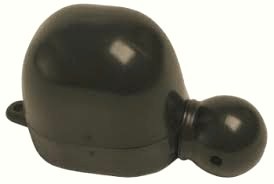Chris Dalton looks forward to this year’s rut.

I am sure that there are not many roe stalker out there who do not look forward to the end of this month with eager anticipation. The sight of a roe doe doing a figure of eight around a tree stump with a buck following her like a steam train, or the chance to call a buck to you from deep in the woodland cover. And a few brief weeks when normally alert and shy deer become so engrossed in matters of love that they become oblivious to all else around them , including the hunter.
The prospect of some nice weather is also welcome, although never guaranteed! As are the more sociable stalking hours, often the best time to be out is between 10 o’clock and 6 o’clock. A lot of these romances are conducted under the cover and relative safety of darkness and so as dawn breaks the loved up does and exhausted bucks are commonly enjoying a nap and cigarette after their exertions. So for us, it’s often better to enjoy those extra few hours in bed and have a leisurely breakfast before heading out mid to late morning, when the roe will have gained their second wind and are up for another go. This is also the time you are likely to catch a buck on patrol around his patch, checking that none of the competition is about, and this can be an excellent time to entice them with your call. But always remember, deer have not read the same books as us, there is no hard and fast rule and if you start to think you know what they will do – they will make a mug of you quick sharp! It’s always worth changing your routine and trying something different.
Here in the South West of Scotland I find the peak of the rut will normally be early August, and looking back through my records most success has been achieved around the period of the 5 to 12 August which is probably a bit later than further South: As I go North, into Angus, I find this peak of activity is a day or two later still. It is generally accepted that rutting intensity is governed by the weather conditions at the time as indeed are many things with deer. The conditions which are considered best are warm and humid, thundery weather which unfortunately are also the conditions loved by the midge! Again, this is not to say that you won’t get rutting activity in other conditions because you will. Personally, I think the fact that sound carries a lot further in these still conditions has a lot to do with rutting bucks responding to the call, simply due to the fact that they can hear it from quite long distances
 On the calls themselves and how to use them, there are many books covering this subject and there is some excellent material in the form of DVD’s and CD’s demonstrating the many different types available and methods of operation. However, nothing is better than watching and listening to someone who has mastered the art, and if you get such an opportunity grab it! It is also vital that you have a basic understanding of what you are attempting – whether that is the high pitched squeak a kid will use as a contact call for her mother, thereby drawing a doe and hopefully bring an attendant buck with her to you, or perhaps the agitation call a doe will make when a buck starts to press her a little too hard. But nothing actually beats watching and hearing these calls and the action that precedes them in the field, but you don’t often get the chance, its back to the groundwork, getting out into the wood, spending time, watching and waiting.
On the calls themselves and how to use them, there are many books covering this subject and there is some excellent material in the form of DVD’s and CD’s demonstrating the many different types available and methods of operation. However, nothing is better than watching and listening to someone who has mastered the art, and if you get such an opportunity grab it! It is also vital that you have a basic understanding of what you are attempting – whether that is the high pitched squeak a kid will use as a contact call for her mother, thereby drawing a doe and hopefully bring an attendant buck with her to you, or perhaps the agitation call a doe will make when a buck starts to press her a little too hard. But nothing actually beats watching and hearing these calls and the action that precedes them in the field, but you don’t often get the chance, its back to the groundwork, getting out into the wood, spending time, watching and waiting.
The type of call you should select is really down to personal choice and one that you can use with some degree of success in making a noise vaguely resembling the deer. I don’t think there is any harm in having a couple of different calls but I really think that a pocketful is a bit over the top! You should practice, NOT IN THE FOREST, and become confident in the use of your chosen call. My own preference, and certainly the call I have most success with, is the Buttolo, I find it easy to use and I like the fact I can operate it from inside my coat pocket. I think the muffling effect of the coat produces a good imitation; I also use a Hubertus cherry wood which gives a nice high squeak and which again I find effective and a slightly different tone to the Buttolo.
The biggest mistake folk make is that as soon as July approaches and often before! Out of the drawer comes the call and off into the wood goes the stalker and calling starts in earnest: all you are actually doing is educating the deer and they very quickly cotton on that something odd is going on. Practice all you like but make sure that it is not anywhere near to any Roe. You are much more likely to succeed if you wait until you have seen some rutting activity and certainly, if you stick to the period around the last week in July and the first 2 weeks in August you should be around the right time.
To learn more about Roebuck stalking follow this link: roe-buck-stalking
If you'd like to go Roebuck stalking then call 0203 981 0159 or email



















